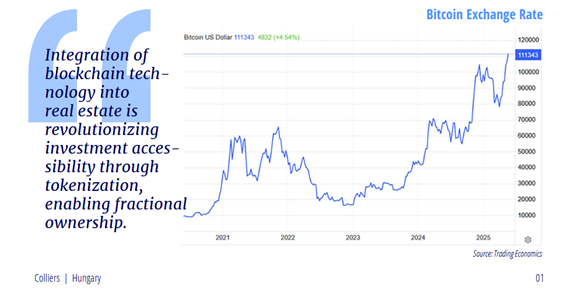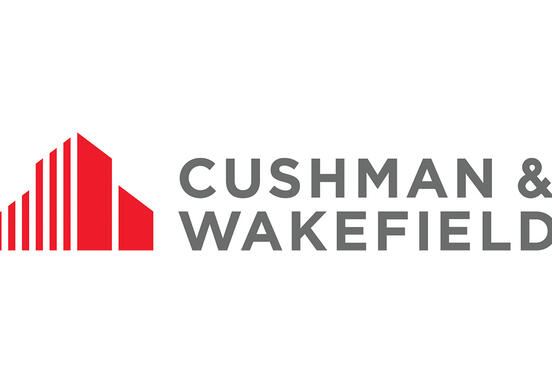Additionally, cryptocurrency trans- actions can speed up deal closures by reducing reliance on traditional banking systems. Tokeni- zation involves converting property ownership rights into digital tokens stored on a blockchain, making asset transfers more seamless. Companies such as RealT in the U.S. allow investors to acquire fractional shares of rental properties via cryptocurrency, while Propine in Singapore provides blockchain-based asset servicing for tokenized securities.
Despite these advantages, the volatility of cryp- tocurrencies presents a major challenge. Property values tied to digital assets can fluctuate significantly, potentially impacting both buyers and sellers.
A well-known example is a Miami penthouse that was purchased for over $20 million in crypto- currency. While this transaction showcased the growing role of digital assets in high-value real
estate deals, it also highlighted risks. If the seller had held onto the cryptocurrency instead of con- verting it to fiat currency, they could have suffered considerable losses due to market fluctuations. Similarly, buyers relying on cryptocurrency face purchasing power instability, which may complicate financing and acquisition strategies. Regulatory scrutiny surrounding large-scale realestate transactions involving crypto further adds to investor uncertainty.
Beyond direct property purchases, decentralized finance (DeFi) platforms are emerging as al- ternative funding sources, bypassing traditional banking institutions. Platforms like Aqarchain in the UAE facilitate real estate investment through blockchain-powered financing models. Additionally, CRE projects that accept cryptocurrency payments can attract high-net-worth digital asset investors. One of the early adopters of this approach was The Aston Plaza & Residences in Dubai, a large-scale development that allowed buyers to pay with Bitcoin..
THE EUROPEAN LANDSCAPE Adoption & Challenges
Across Europe, countries such as Switzerland and Liechtenstein have become pioneers in fostering blockchain-driven real estate investments. In the Central and Eastern European (CEE) region,
cryptocurrency adoption in real estate remains relatively limited but is slowly gaining traction. Poland and Estonia have seen the emergence of tokenized real estate platforms, positioning them
at the forefront of blockchain-driven property investment in the region.
Estonia has built a reputation as one of the most blockchain-friendly countries in Europe, backed by its advanced e-government infrastructure and clear regulatory policies. The nation has been
a leader in digital asset adoption, with startups actively developing real estate tokenization solutions. Several companies have introduced block-chain-based property investment models, allowing investors to purchase shares in properties through digital tokens. Estonia’s well-defined legal framework and thriving startup ecosystem make it a promising market for blockchain-integrated commercial real estate.
Poland, with its expanding blockchain and crypto community, has also shown growing interest in tokenized real estate. Warsaw and Kraków have emerged as key technology hubs, with blockchain
platforms like QDVI exploring tokenized property investment solutions. While Poland’s fintech sector is highly progressive, regulatory uncertainty remains a significant barrier. The country has yet to establish a comprehensive legal framework for tokenized real estate transactions, which could slow broader adoption.
Hungary’s crypto sector is still in the early stages of development, with Budapest becoming a focal point for blockchain startups and fintech innovation. The Hungarian government has taken steps
to make the country more attractive for cryptocurrency investors, including setting a relatively low 15% capital gains tax on crypto earnings compared to other EU nations. Despite this, tokenized real
estate transactions remain rare, as most develop- ers and investors are still in the exploratory phase. Some property developers in Budapest’s innovation districts have expressed interest in blockchain
applications, but large-scale adoption has yet to take off. The Hungarian National Bank (MNB) hastaken a cautious stance, emphasizing the need for regulatory clarity before widespread integration of
digital assets into the real estate sector. Regulatory Hurdles and Market Considerations Regulatory and tax uncertainties remain key chal- lenges for integrating cryptocurrency into commercial realestate. Many governments are still formulating legal frameworks for digital asset transactions, which could deter institutional investors. Another important consideration is the impact on property values—while crypto-friendly jurisdictions may experience increased demand, stricter regulations could create barriers for crypto-driven real estate initiatives.
Blockchain technology also introduces efficiency improvements through smart contracts, which can automate key real estate processes such as lease agreements, property sales, and asset management. Platforms like Propy have already demonstrated the potential of smart contracts by streamlining property transactions on blockchain networks, ensuring security and transparency.
Conclusion
While blockchain and cryptocurrency have the potential to transform commercial real estate by enhancing liquidity, accessibility, and operational efficiency, key challenges such as price volatility,
regulatory uncertainty, and adoption hesitancy must be addressed. In the CEE region, Estonia stands out with its regulatory clarity, Poland offers a dynamic technology ecosystem. Hungary is also showing early signs of adoption as interest in blockchain-driven real estate solutions grows. As legal frameworks continue to evolve, the integration of cryptocurrency and tokenization in realestate is likely to expand, reshaping investment models in the years ahead.
Colliers








